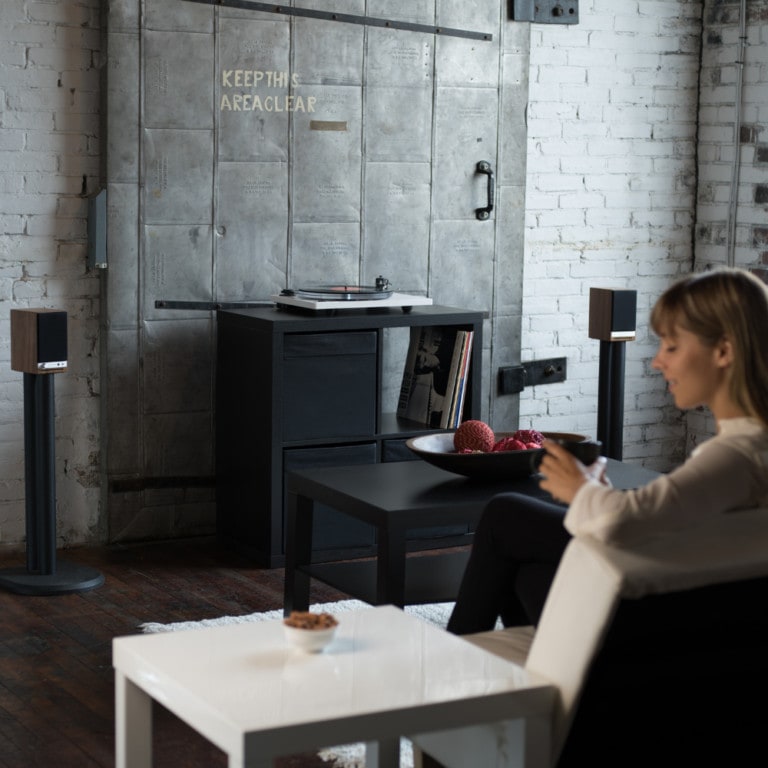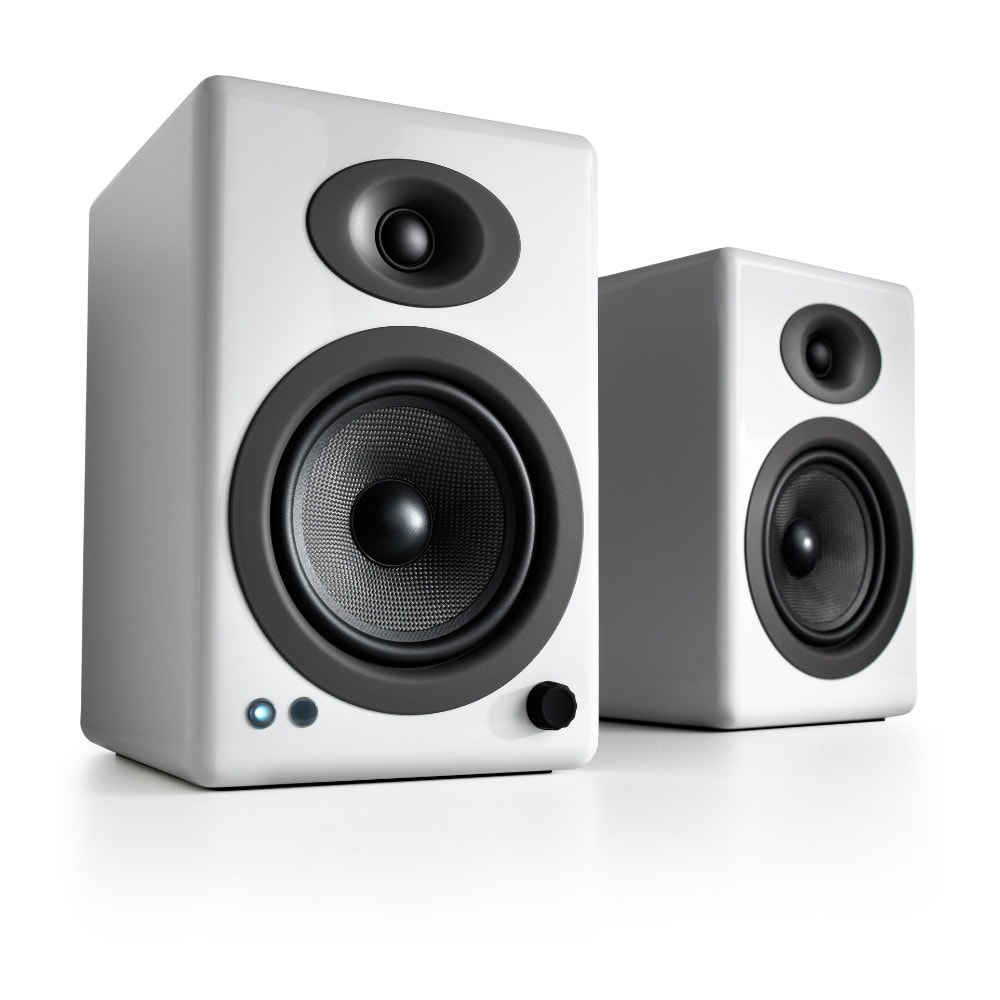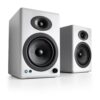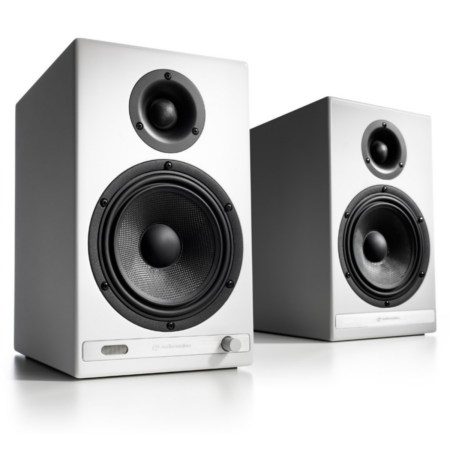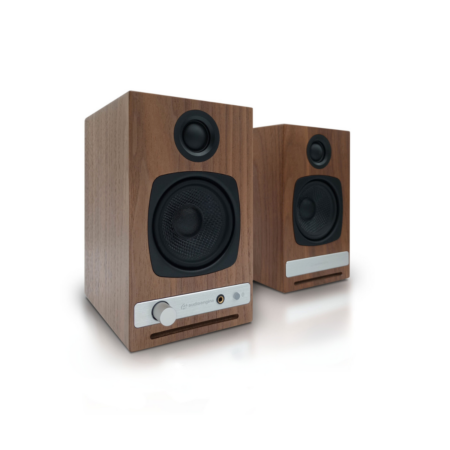
A5+ Home Music System (Open Box)
Pro Tip Pair the A5+ Classic with the Audioengine D1 DAC for desktop applications. This bypasses your computer's lower quality audio components, with the D1 DAC significantly enhancing the sound quality.
Enter your postal code to estimate delivery time from Texas:
Frequently bought together
Frequently bought together





Free ground shipping
10-second checkout with Amazon
3-year warranty
We pay sales tax, if applicable
60-day audition

If They Sound Too Good to Be True, They’re Audioengine
Audioengine’s analog amplifiers are designed to give you a much warmer, clearer sound with rich, pure bass tones than the digital amplifiers you find in so many mass-produced speakers. Some people think analog is “old,” but it’s not. It’s experienced.
Of course, it helps that our cabinets are hand-built and the sound is hand-engineered. With retro analog and modern design, the A5 is a classic home music system that just keeps getting better.
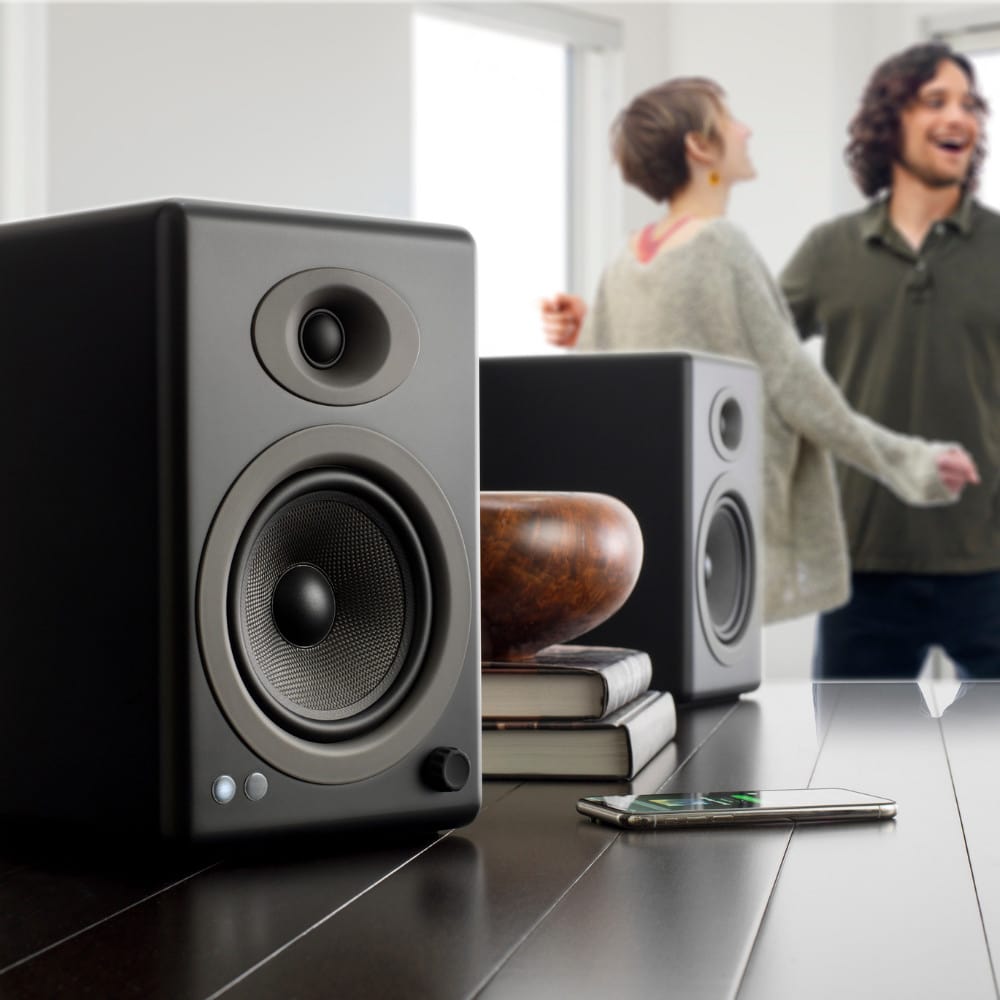
Their Size Speaks Volumes
Built with hand-tuned aramid fiber woofers, silk tweeters, and built-in power amps in precision-tuned and hand-crafted cabinets, the A5+ Home Music System is small enough that you might just overlook it. But turn these speakers up and they're impossible to miss.

Reasons to Love It
- On your bookshelf or on stands
- 5” woofers
- Analog inputs
- Designed to connect seamlessly to a subwoofer, like our S8 Powered Subwoofer
- Remote control
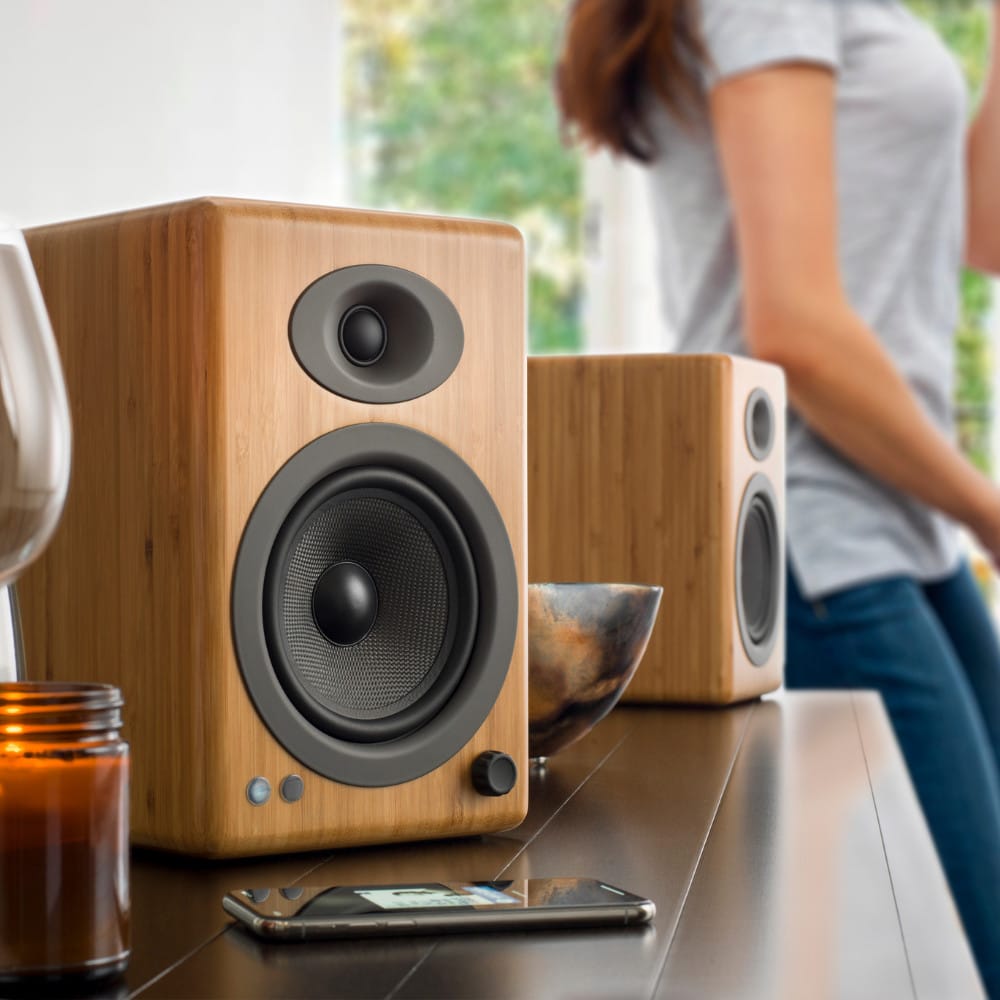
Fast, Frustration-Free Set Up
Whether you’re rocking a computer, tablet, phone, or turntable, setting up the A5+ Home Music System is easy. Plus, there’s no network setup or passwords to enter, so you’ll be listening to your favorite tunes in no time.
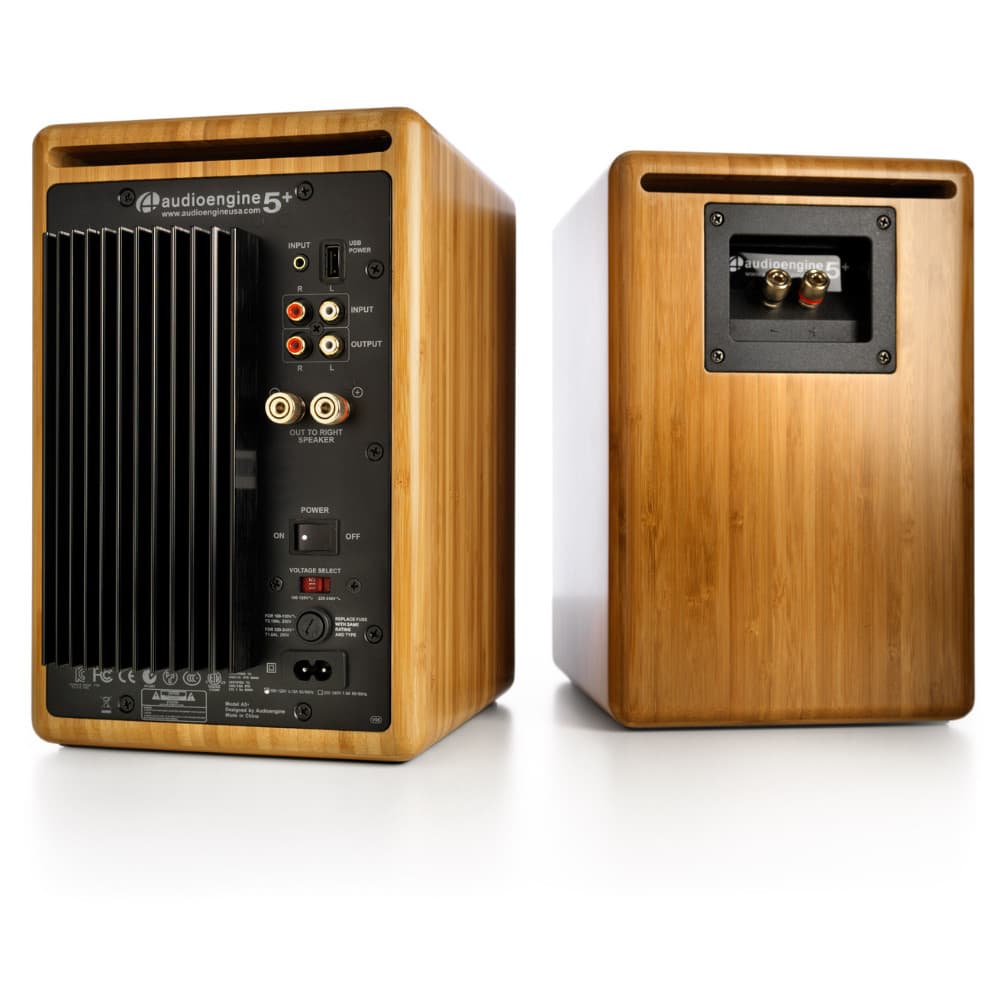
Tech Specs
What's in the box
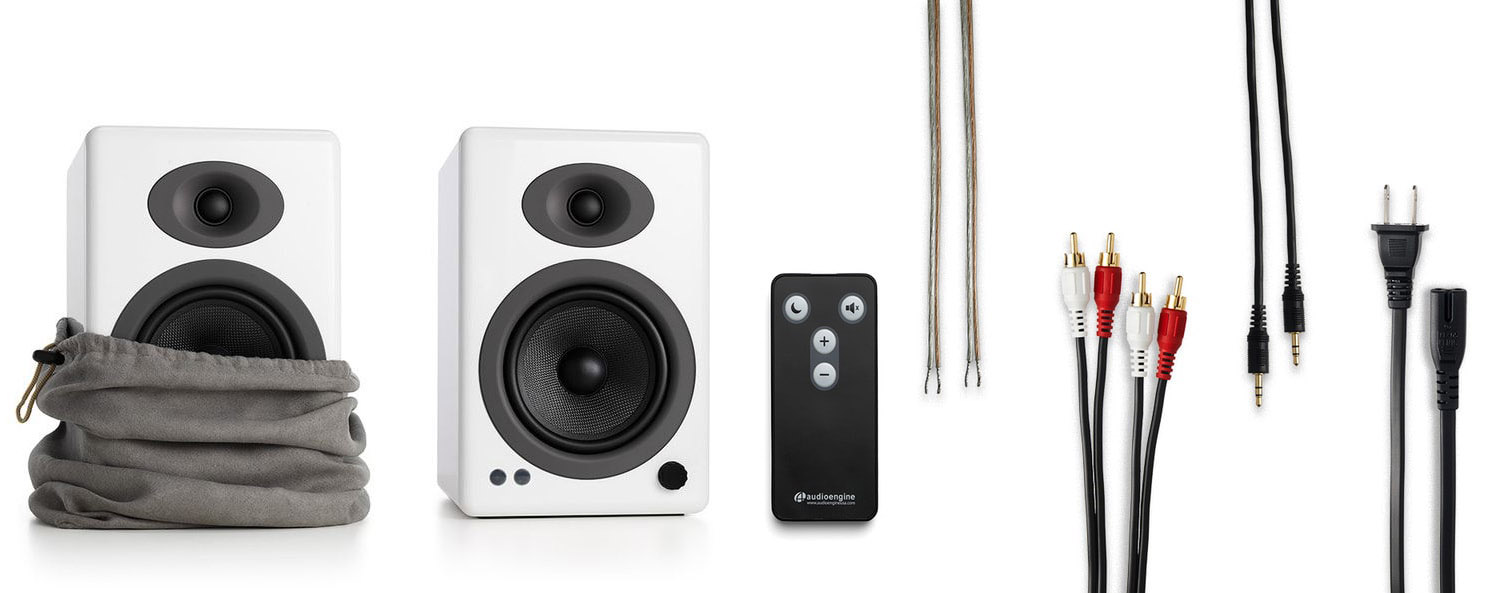
Questions & answers about the A5+ Home Music System (Open Box)
1. Turn Off and Unplug:
- Make sure your system is turned off and unplugged.
2. Dust the Surfaces:
- Use a soft, dry cloth to wipe away dust.
- For hard-to-reach places, use a soft brush or a can of compressed air.
3. Wipe Down the Exterior:
- We do not recommend using any solvents
- If cleaning off stains or build-up is necessary, we recommend doing so with a very small amount of mild cleaning solution applied only to the affected area, followed by quickly wiping the area dry completely.
- Any scoured pads or objects like a 'magic eraser' too easily run the risk of removing sealers and top coats of the painted finish that can leave a clearly visible change in the uniformity of the paint/finish
4. Clean the Speaker Grills:
- The speaker grills can be gently cleaned with a vacuum, preferably using a soft bush attachment.
- A lint roller can also be used.
5. Clean Buttons and Knobs:
- A dry cloth is recommend for cleaning any knobs, buttons or other surfaces
- Be careful not to let water get into any gaps.
6. Clean Ports and Connections:
- Use compressed air to blow out dust from ports and connections.
7. Let Everything Dry:
- Make sure everything is completely dry before plugging back in and turning on.
8. Regular Cleaning:
- Dust your system regularly to keep it in good shape.
By following these steps, you can keep your Audioengine system clean and working well.
- The process for replacing a volume encoder begins with pulling the volume knob straight back from the encoder shaft

- Make sure the rubber insert stays with the volume knob -
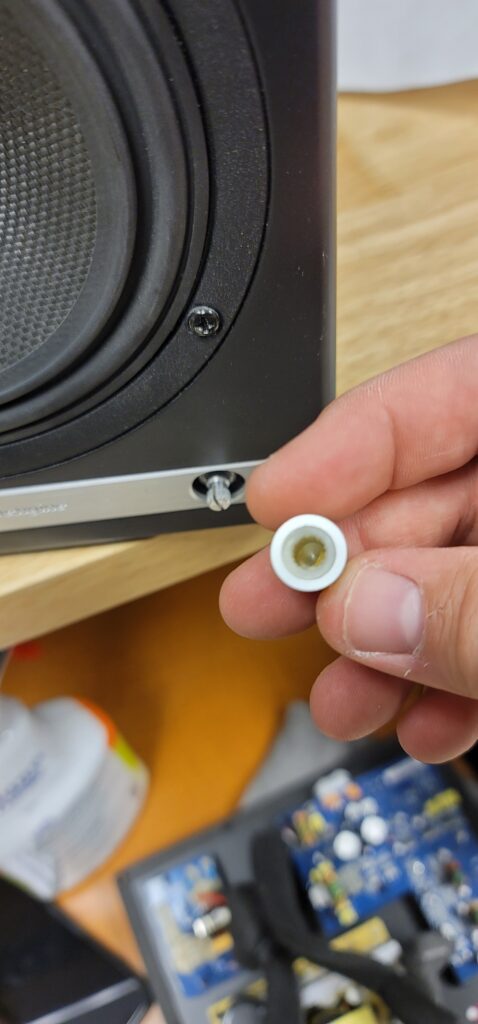
- The volume encoder shaft should look like so before proceeding -
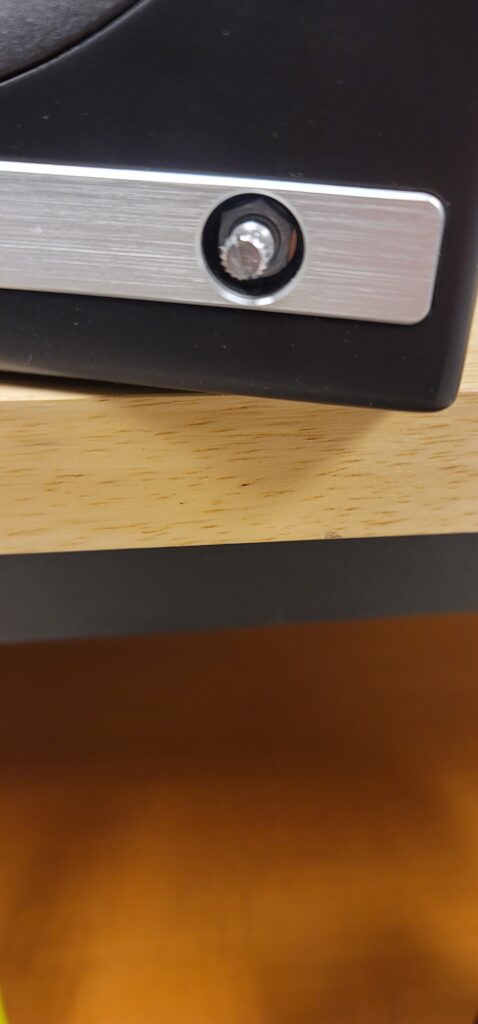
- Using a thin-walled 10mm socket, remove the lock nut fastening the encoder to the front of the speaker cabinet -

- Once you have removed the amp backplate on the back of the active speaker, make sure to remove the encoder wiring terminal clip from the amp circuit board. You can then fully uninstall the encoder assembly by pulling back the encoder shaft from the inside -
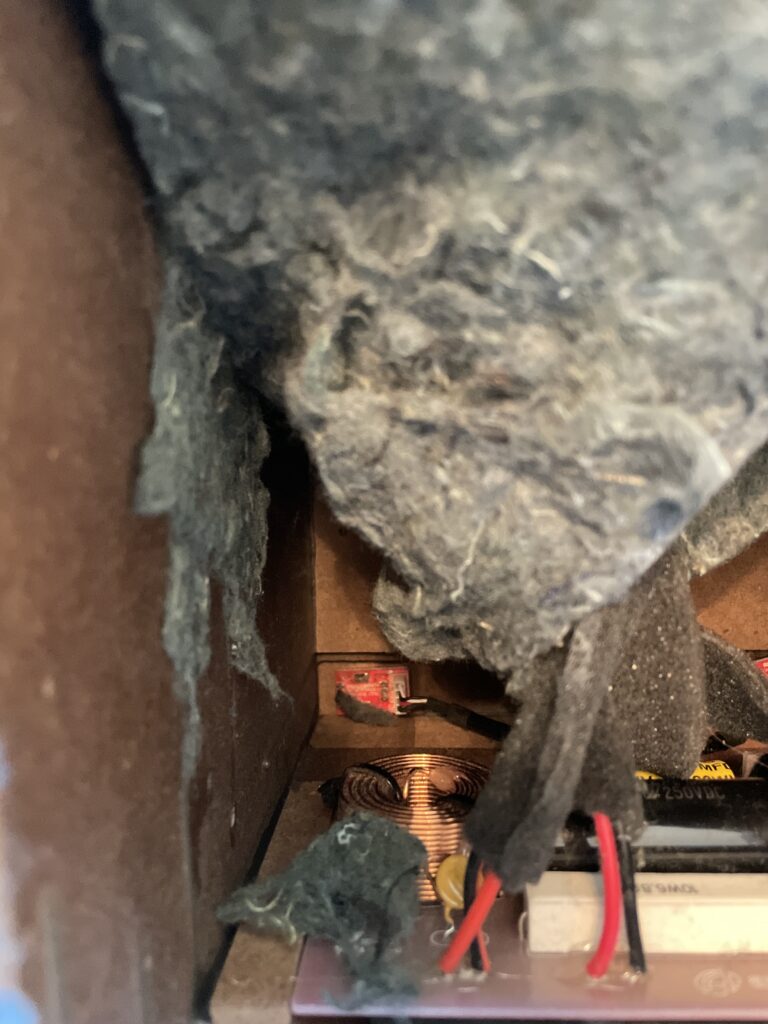
- Finally, the IR receiver can be removed by using a long-necked Phillips PH1 screw driver to remove the 2 screws fastening the IR receiver on the inside of the cabinet -

After fully removing the faulty encoder, the replacement can be installed following these steps in reverse order before finally connecting the wiring clip to the amp circuit board and fastening the amp backplate back onto the active speaker.
The process can be a bit cramped if you wish to do as little disassembly as possible, or a bit easier if you are comfortable moving parts to give yourself more workspace. The sound damping insulation normally overlaps at the bottom of the active cabinet. This can be peeled back similar to the reference picture attached. The crossover is mounted underneath this insulation (If process being done on an HD6) and is perhaps the most obtrusive part when replacing a volume encoder. This has two Philips head screws mounting it to the base of the cabinet along with an adhesive pad to reduce noise vibration. It is possible to remove the two screws and lift the adhered crossover up from the base of the cabinet momentarily to get better access to the IR receiver and volume knob assemblies at the front. If you'd rather not risk damaging anything, the IR receiver can still be unscrewed from the inside of the cabinet with a long-necked Phillips PH1 driver. The volume knob is loosened from the outside of the cabinet with a thin-walled 10mm socket found by pulling the volume knob straight back from the encoder shaft. Ample lighting will also make this work easier
Each speaker is 10.75"H x 7"W x 9"D
Absolutely! You can connect any Audioengine speaker with an analog output to any Sonos product that has the Line-In feature. You can also connect any Audioengine passive speakers into an existing Sonos system using the Sonos Amp.
All turntables require a phono preamp stage before connecting to Audioengine speakers. Many turntables have this built-in , while others do not and would require an external phono preamp. Check the turntable manufacturer’s website or user manual. Some turntables may even include Bluetooth, in which case you can pair and connect them to the speakers wirelessly!
Nope! Audioengine powered speakers have amplifiers built-in. This means you don't need any extra equipment, other than a source to play music on (smartphone, / tablet, a computer, CD player, Turntable, Etc). Just plug your source directly into the inputs on the rear panel of the left speaker with the included cables, and you're listening to music!
The A5+ Classic is not officially supported by any universal remotes. It is possible to use a third party remote, but that remote needs to support IR learning. This is a feature that allows a universal remote to learn commands directly from the remote we supply. The Logitech Harmony remote, for example, is supported by the A5+ Classic.
You wouldn't be able to use a pair of headphones directly with the A5+ Classic; in order to use headphones with the A5+ Classic, you would need to include something with a dedicated headphone amp, such as our D1. All you would need to do is plug the D1 into your computer (either with an optical or USB cable) and connect the D1 from its RCA outputs into either of the inputs of your speakers.
Yes they do! They are equipped with a power-saving circuit that turns off the speaker's final stage amp. This idle mode activates right after you stop playing music. Due to this power-saving function, it's perfectly fine for the speakers to stay on all the time!
Audioengine speakers can be easily connected to your TV set as long as there are analog outputs available. Any of our speakers will provide a greatly enhanced TV audio experience with a wider soundstage and better imaging than most sound bars.
Sure, for A5+ Classic you will need about 100-120W.
Yes, just switch the voltage selector on the rear panel to match the AC power in your country before powering them on. We recommend changing the fuse when using a different voltage. For 220 volts, here's the value you would need:5mm x 20mm - 1.6 amps @ 250 volts - slow blow fuse. The power cable is detachable on our powered speakers which makes it convenient to replace the AC plug with a different type if you don't want to use an adapter plug.
The A5+ Classic was designed with the user's listening experience in mind and are not marketed as pro audio mixing monitors. However, Audioengine has its roots in the studio monitor world and the A5+ Classic is quite good for this purpose. We've had customers tell us they use these for nearfield listening and music editing with excellent results.
Our woofers are made of aramid fiber and the tweeter domes are silk. Both of these materials are very robust and can handle quite a bit, therefore we decided against grill covers for the A5+ Classic as they tend to negatively color the sound. Even though our speakers do not have grills they are still cat and kid-friendly!
Compare Us to the Competition

Fearless
Shopping
- Fast & free shipping
- We pay sales tax, if applicable
- 60-day audition & easy returns
- 3-year warranty & superior support
- Guaranteed smiles

We’ve Got Sound Advice for Everyone on Your Gift List
